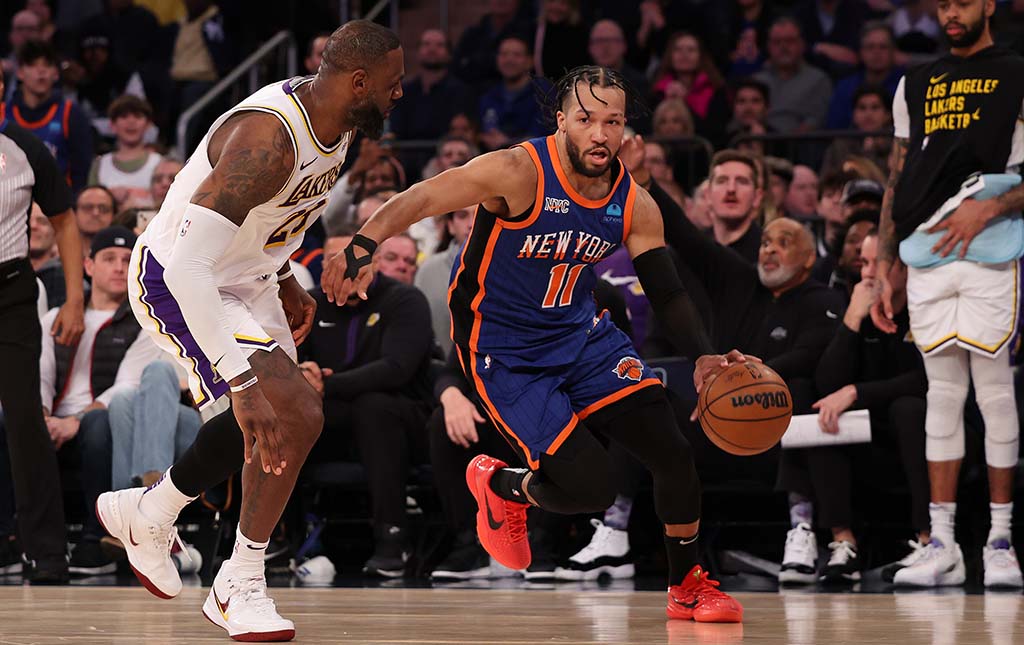Questions Surround Blockbuster Sports Streaming Joint Venture
Rivals, stations blitz sports-only approach of Disney-Fox-Warner Bros. Discovery partnership

After nearly overshadowing the Kansas City Chiefs and San Francisco 49ers during Super Bowl week, the joint venture newly kicked off by The Walt Disney Co.’s ESPN and rivals Fox and Warner Bros. Discovery isn’t as sure a thing as Chiefs quarterback Patrick Mahomes, who again emerged as the big game’s most valuable player.
Investors and observers were split on the joint venture. Some saw the companies as three wise men, creating their own virtual multichannel video distributor (vMVPD) to carry a skinny bundle of most of TV’s most-watched channels, including ESPN, ABC, Fox and TNT. Others thought the venture was formed by three blind mice who failed to see how their leviathan would open the floodgates to accelerated cord-cutting by letting sports escape the historically lucrative pay TV business.
Also Read: Sports Executive of the Year: Game on, Says Luis Silberwasser, TNT Sports Chief
The combination will encourage frustrated sports fans who have cut the cord to come into (or back into) the fast-eroding pay TV ecosystem, which for years has generated big profit margins for programmers, fans of the deal argued. And the JV will pay its founders top rates for their sports programming.
The optimism was met with concerns on Wall Street and elsewhere that the venture would encourage continued cord-cutting, making it easier for consumers to choose a skinnier bundle of programming for about $50 a month and stop subscribing to still-lucrative channels like CNN, Fox News, Disney Channel, HGTV and FX.
The price the venture would charge distributors was just one of the still unanswered questions about the still-unnamed business.
Who will run it? Will other partners be added? Will traditional distributors be able to offer the new bundle to their subscribers? Will affiliates be cut in?
Broadcasting & Cable Newsletter
The smarter way to stay on top of broadcasting and cable industry. Sign up below
During earnings calls the week the venture was announced, Disney CEO Bob Iger and Fox executive chairman and CEO Lachlan Murdoch both downplayed the risk of accelerating cord-cutting and further damaging their news and entertainment cable channels.
“While there might be some de minimis economic impact on us for us it’s very low-risk,” said Iger, who responded to pressure from activist investors by announcing that ESPN would go direct-to-consumer next year and that Taylor Swift’s concert film will be on Disney Plus next month.
Of the 125 million U.S. TV households, about half, or 60 million, are not in the traditional bundled ecosystem.
“We would not be launching this product if we thought it was going to significantly affect our affiliate partners,” Murdoch said, adding, “The opportunity is huge.”
Wariness on Wall Street
Wall Street was skeptical. “Fox said they’re confident that the sports streaming JV with Disney and WBD won’t disrupt the traditional pay TV ecosystem,” Wells Fargo analyst Steven Cahall said. “We are not yet convinced and think it’s a gamble to give bundle subs additional options. ”
The news wasn’t great for companies impacted by the venture.
Fubo, the money-losing sports-oriented streaming service, saw its stock price fall about 20%.“We’re not surprised more sports streaming options are becoming available,” Fubo said, “We believe our robust programming and quality product experience cannot be duplicated by what is likely to emerge from this joint venture.”
Fubo added that “we have already seen that a consortium born of historical competitors is a difficult undertaking, and streaming joint ventures rarely work.”
Paramount Global, whose rights holdings include the NFL, a piece of the men’s NCAA basketball tournament and college football, downplayed the strategy behind the sports venture.
“What we focus on is a broad strategy,” Paramount CEO Bob Bakish told CNBC. “We’ve looked at sports-only plays, including in digital, both on a standalone basis and with partners, but we continue to believe broad is better.”
More Reach for Stations
Stations, which are increasingly adding local sports to their lineup, could also be impacted but preferred to focus on the bright spots, at least in public.
The venture “could be a significant opportunity to expand the pay TV ecosystem,” Gray Television said in a statement. “Gray welcomes any venture that expands the reach of local broadcasting stations, which in turn supports the ability of local stations to maintain trusted local news operations that benefit everyone.”
Said E.W. Scripps CEO Adam Symson, “Affiliates are going to be compensated for being carried along.”
“People don’t want to go to a buffet where half the steam trays are missing,” Symson added. “It calls into question the value of the consumer proposition. If you’re a sports nut today and you need access to all the live telecasts of your favorite sports, you’re best off maintaining the pay TV bundle as it is.”
Jon has been business editor of Broadcasting+Cable since 2010. He focuses on revenue-generating activities, including advertising and distribution, as well as executive intrigue and merger and acquisition activity. Just about any story is fair game, if a dollar sign can make its way into the article. Before B+C, Jon covered the industry for TVWeek, Cable World, Electronic Media, Advertising Age and The New York Post. A native New Yorker, Jon is hiding in plain sight in the suburbs of Chicago.

